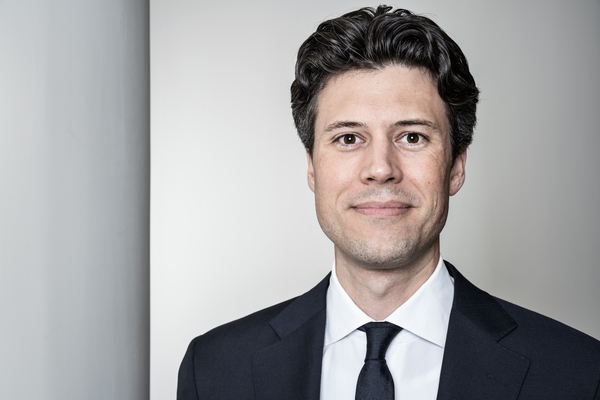
Germany, particularly the Frankfurt area, has established itself as one of Europe’s leading data centre hubs, supported by its central location, strong connectivity, and the presences of one of the world’s largest internet exchanges (i.e. CE-CIX). Demands keep rising, driven by cloud-services and AI, but development is increasingly shaped by the regulatory framework for access to power supply and grid connections, as well as permitting procedures.
1. What are the challenges I might face when trying to develop a data centre in Germany?
- Power Supply and Grid Connection: Germany’s energy transition or ‘Energiewende’ is transforming the power sector by prioritising renewable integration. This shift creates grid capacity constraints that directly impact data centre development. Large-scale facilities requiring tens or even hundreds of megawatts face difficulties in securing reliable long-term power. Grid connections have become increasingly competitive, with data centres competing against – among others – large scale manufacturing and industrial plants, electrolysers, and more recently, the rapid expansion of battery energy storage systems and EV charging infrastructure. Without a dedicated framework to prioritise grid access applications, operators rely on first come, first served rules or repartitioning, often resulting in insufficient allocations and investor uncertainty. Transmission Operators (TSOs) report that grid connection capacities are oversubscribed or exhausted for upcoming years, while local grid upgrades add further delays and cost. The Energy Industry Act (EnWG) currently offers no streamlined access for data centres, leaving them to navigate a fragmented and inflexible system.
- Permitting Process: The permitting process for data centres in Germany is still too complex, multi-layered and time-intensive, causing significant delays to project timelines. Developers must first obtain building permits under the state building codes, and in many cases also require additional approvals under the Federal Immission Control Act. Facilities with backup generators exceeding 20 MW need immission permits, while those exceeding 50 MW must undergo public consultation, adding complexity and time. Compliance with environmental rules creates further technical and administrative burdens. A persisting challenge is the lack of coordination between permitting authorities, including environmental and water authorities, which often results in conflicting requirements or the need for extensive documentation and revisions. Moreover, the absence of integrated planning frameworks for supporting infrastructure (e.g. power and heat networks), means developers must independently assess site viability, further complicating the approval process.
- Regulatory and Site Constraints: Germany’s Energy Efficiency Act sets strict rules specifically for data centres, requiring facilities with more than 300kWp to source 50% renewable energy and to implement environmental management systems from 2026, as well as reuse unavoidable waste heat. New data centres must achieve a Power Usage Effectiveness (PUE) of ≤ 1.2, while existing ones must achieve a PUE of 1.5 by 2027 and 1.3 by 2030. In practice, compliance is hindered by the lack of a national heat infrastructure map and limited district heating capacity. Site availability is a challenge, as well, since data centres are restricted to industrial or commercial planning zones, which are often far from urban areas where heat and connectivity demands are highest.
- Latency and Connectivity: Germany generally benefits from a robust telecommunications infrastructure, anchored by Frankfurt’s DE-CIX. However, geographic disparities persist. Urban areas provide better connectivity but face higher costs and space constraints, while rural areas may lack the necessary infrastructure to support low-latency operations.
2. How is Germany addressing the challenges of power supply and the planning process?
- Power Supply and Grid Connection: Regarding their power supply, data centres must already cover 50% of their electricity demand from renewable sources under the EnWG, and this metric rises to 100% by 2027. Flexible grid connection contracts, enabled by the EU Electricity Market Directive, allow bespoke arrangements with grid operators and even limited over-build or ‘Überbauung’ to reduce connection delays. The Heat Planning Act encourages integration of unavoidable waste heat from data centres into district heating systems, with proposals for a national heat infrastructure atlas to provide planning certainty. Transparency is improving, with the German Federal Network Agency requiring TSOs to publish indicative grid capacity maps by region, showing expected availability up until 2030. However, there is still no dedicated, digitalised grid connection process with binding reservations or prioritisation criteria, leaving developers exposed to “ghost projects” and accompanying uncertainty. Electricity grid expansion is planned according to the Network Development Plan, including major high-voltage direct current corridors, but delays, such as with SuedLink (now postponed to 2029) limit reliability within project timelines.
- Planning and Permitting Process: In Planning and Permitting, reforms aim to simplify procedures through digitalised applications and faster approvals. Proposed but not yet enacted changes to the Federal Building Code (BauGB) would classify data centres as privileged developments according to Sec. 35 BauGB, reducing zoning hurdles if environmental conditions are met. Policymakers are also moving towards integrated infrastructure planning that considers grid capacity, heating networks, and environmental impact. The German government has further announced digitalisation initiatives for grid operators and published plans to attract an ‘AI-gigafactory’ to strengthen Germany’s profile. While reduced electricity prices are under discussion following the EU’s Clean Industrial Deal State Aid Framework, data centres are not yet included in the government's plans – in contrast to other energy-intensive companies.
3. What other changes could be made to help the data centre industry grow and stay competitive in Germany?
To ensure long-term sustainable growth and competitiveness, we believe Germany should prioritise the following three areas to ensure the sector continues to thrive:
- Private Wires and Microgrids: They could allow operators to source renewable energy directly and bypass congested transmission systems. In order to promote private wire and microgrid solutions, the legislator would need to establish a precise legal framework to help operators avoid 'grid operator status' and the associated obligations, following a recent European Court of Justice ruling that reclassified many such approaches.
- Prioritisation Criteria: Establishing criteria to prioritise ‘grid-serving’ projects, such as data centres, that operate at high efficiency, rely fully on renewable power, or supply waste heat, would also provide a transparent alternative to the current ‘first come, first served’ approach – as with all grid access applicants in search of securing grid capacity.
- Infrastructure and Planning Reforms: Reforming the framework for infrastructure and planning would further strengthen Germany’s competitiveness as a data centre hub. A nationwide ‘heat atlas’ would enable more effective integration of unavoidable waste heat from data centres into district heating systems by providing transparency on existing and planned networks. Transregional planning zones, based on grid capacity and potential to feed-in to district heating networks, could mirror the approach used for renewables and give developers greater certainty. Amending the BauGB to explicitly classify data centres as "privileged" projects outside of urban areas could reduce planning complexity.
When considered as a whole, these measures would alleviate bottlenecks, speed up deployment and establish Germany as a leading market for sustainable and competitive data centre operations.
Related insights
Key contacts


Related sectors
Related locations
To the Point 
Subscribe to receive legal insights and industry updates directly into your inbox
Sign up nowGet up to date with our latest news on LinkedIn
Follow now

